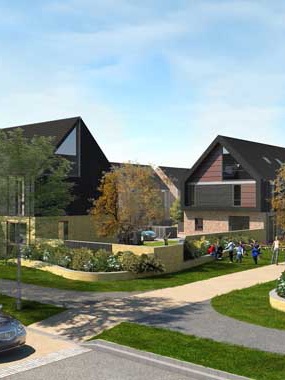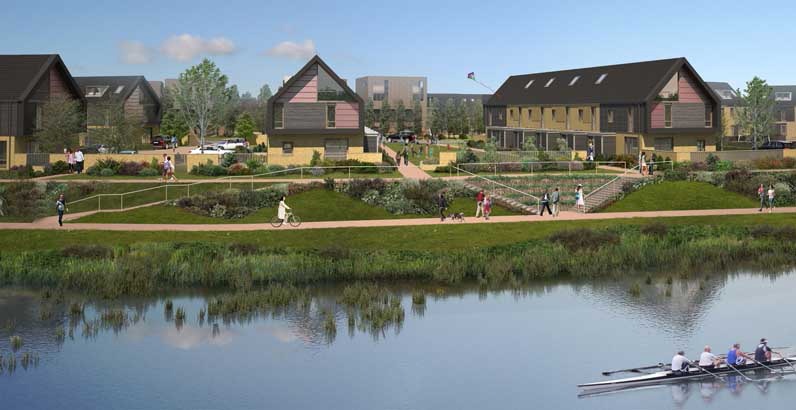
Glasgow Athletes Village
A true “home from home” experience
Project: Glasgow Atheletes Village
Company: Stewart Milne Timber Systems
Sector: Residential
Technology: Timber Frame


Overview:
Stewart Milne Timber Systems was awarded with the contract to supply and erect the timber frames for 184 two and a half storey housing units in the purpose-built Athletes Village in Glasgow’s East End. The project, which is being delivered in two phases, commenced in March 2012 and will continue until August 2013.
Designed by RMJM Architects in consultation with athletes, the Commonwealth Games 2014 Athletes Village promises to be a true “home from home” experience and will be capable of housing the expected 6,500 athletes and team officials at Games time. The site is being developed by Glasgow City Council, in partnership with private-sector consortium City Legacy, which comprises Cruden Building and Renewals, CCG, Mactaggart & Mickel and Malcolm Construction. Working closely with Cruden Building and Renewals, Stewart Milne Timber Systems developed a cost effective timber frame solution to achieve the standards set out by Glasgow City Council.
Project Type/Application:
To meet the 60% carbon reduction targets set, Stewart Milne Timber Systems used a standard open panel build system, with pre-fabricated floor cassettes and roof cassettes. This not only helped to achieve the demanding thermal standards, but also reduced the overall build time. The team carried out further value engineering on the completed designs to improve buildability and ensure a smooth process on site.
As part of the build system, the team supplied and fitted stair flights, which streamlined the supply chain and helped to further speed up the process for the client. This one-stop shop approach starts from the initial design stage and carries right through to onsite delivery, guaranteeing a high standard finished product with shorter lead times. These cost certainties allow clients to maintain control of expenditure, yielding significant savings and ensuring project spend is optimised.
Outcome/Results/Success Factor:
Following the Games, the 38.5 hectare site will be further developed to become an attractive residential area, so each house type had to be flexible in the design and structure to allow the units to be transformed into family housing when the Games come to an end. The development will be turned into 1,000 homes, 300 of which will be available for social rental, as well as a care home for 120 residents. The area will form a new community, with housing, amenities and public spaces.